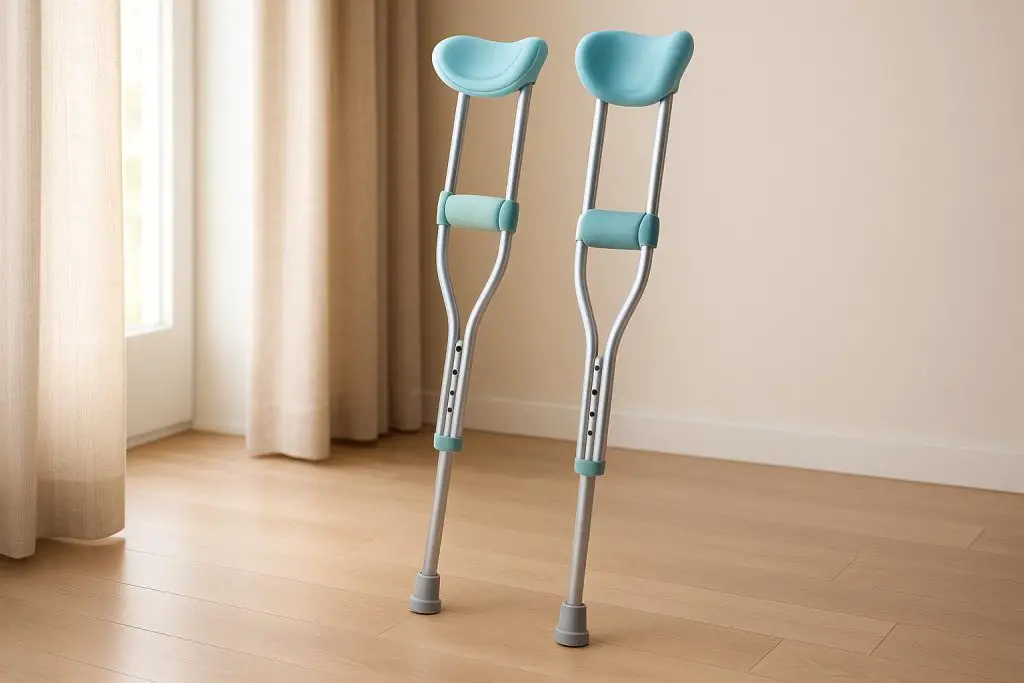How To Talk To Your Physical Therapist
Clear communication with your physical therapist can speed up your recovery and improve your results. Here’s how to get the most out of your sessions:
- Be prepared: Bring medical records, list your symptoms, and set clear recovery goals.
- Describe pain clearly: Use terms like sharp, dull, or burning, and share what triggers or relieves it.
- Ask questions: Clarify your treatment plan, progress tracking, and at-home care.
- Give feedback: Report how exercises feel, any new pain, or changes in your daily activities.
- Track progress: Use a journal or online portals to log symptoms, exercises, and improvements.
How to Communicate Effectively in Physical Therapy
Getting Ready for Your PT Session
Before heading to your physical therapy session, take some time to gather the right information and materials. This will help your therapist get a complete picture of your condition and ensure your sessions are as effective as possible.
Medical Records to Bring
Make sure to bring the necessary documents so your therapist can better understand your medical history and current condition. Here’s what to include:
| Document Type | Details to Include |
|---|---|
| Medical Reports | Recent X-rays, scans, or lab results |
| Prescriptions | List of current medications, dosages, and supplements |
| Referral Papers | Doctor’s referral or prescription for therapy |
| Health History | Information on past injuries, surgeries, or family medical conditions |
If possible, keep digital copies of these records for easy access. If you’re using paper documents, organize them in chronological order to make reviewing them quicker and easier.
Writing Down Symptoms and Goals
Before your appointment, jot down notes about your symptoms and what you hope to achieve through therapy. Be as specific as possible by noting:
- Activities that trigger discomfort or pain
- Times of day when symptoms tend to worsen
- Things that provide relief
- How these symptoms impact your daily life
When it comes to setting recovery goals, clarity is key. General goals are a great start, but try to refine them into SMART goals – those that are Specific, Measurable, Attainable, Realistic, and Time-related. This approach gives your therapist something concrete to work with.
Here’s an example of how to turn a broad goal into something actionable:
| Type | Actionable Example |
|---|---|
| Basic Goal | Return to running |
| SMART Goal | Run 2 miles without pain, 3 times a week, within 3 months |
| Functional Goal | Walk the dog for 30 minutes daily without knee pain |
The best goals are tied to activities that matter to you personally. As one patient shared:
"The questions were to the point and it made me aware of what I myself hoped and expected of my rehabilitation. Every patient should have a conversation like this, this is what rehabilitation is all about." – Client M10
Speaking Up During Your Sessions
How to Describe Pain Accurately
Being able to describe your pain clearly and precisely can make a big difference in how effectively it’s treated. The more specific you are about the type of discomfort and how it affects you, the better your therapist can tailor your treatment.
Here’s a quick guide to help you describe pain more effectively:
| Pain Type | Description Examples | Impact Level |
|---|---|---|
| Sharp | Stabbing, shooting, piercing | Often stops activities immediately |
| Dull | Achy, throbbing, tender | May allow for limited movement |
| Burning | Hot sensation, radiating | Typically affects larger areas |
| Cramping | Tight, squeezing, pressure | Can come and go |
When discussing your pain, include details like:
- What triggers the pain, how long it lasts, and what makes it feel better or worse
- When the pain occurs (specific times or activities)
- The impact on your daily life and routine
"The better you can describe that pain, though, the quicker and more successful they’ll be in matching you with a treatment that will help you feel better." – Tristan Weaver, MD
Once you’ve shared your pain details, don’t hesitate to ask follow-up questions to refine your therapy approach.
Questions You Should Ask
After describing your pain, asking the right questions can help you and your therapist align on a treatment plan that works for you. These questions should focus on both short-term relief and long-term recovery.
Here are some key questions to consider:
| Topic | Questions to Ask |
|---|---|
| Treatment Plan | What type of therapy will address my condition? How often should I schedule sessions? |
| Progress Tracking | How will we measure improvement? When might I start noticing results? |
| Home Care | Should I use ice or heat? Are there activities I should avoid? |
| Exercise Protocol | How many repetitions should I aim for? What level of discomfort is acceptable? |
"Open dialogue with your therapist delivers clearer guidance for treatment."
Reporting Exercise Results
Providing detailed feedback about your exercises is essential for your therapist to fine-tune your treatment plan. When sharing your experience, make sure to:
- Highlight the difference between normal discomfort and pain that might require adjustments
- Mention any lasting effects, improvements, or setbacks after completing exercises
- Note changes in your range of motion or strength
- Share which activities have become easier or more challenging
It’s also helpful to keep track of your progress between sessions. Record details such as:
- Which exercises feel manageable and which are more difficult
- Any noticeable changes in mobility or strength
- New symptoms that arise
- Activities you’re finding easier or harder to do
This kind of feedback allows your therapist to adjust your plan and keep you moving steadily toward your recovery goals.
Managing Recovery Problems
Talking About Slow Progress
If your recovery feels slower than expected, it’s important to talk openly with your therapist. Recovery doesn’t follow a strict timeline – it can vary widely from person to person. Here’s how you can approach these conversations effectively:
| Progress Concern | Action Steps | Key Details |
|---|---|---|
| Slower Than Expected | Share specific examples | Highlight activities that are still challenging and discuss your concerns about the timeline. |
| Plateau in Recovery | Compare to initial goals | Reflect on what worked earlier and identify current limitations. |
| Motivation Issues | Discuss honestly | Talk about the emotional toll and how it’s affecting your daily life. |
| Goal Adjustments | Request a timeline review | Work on setting realistic expectations and adjusting targets as needed. |
It’s also helpful to remember that recovery isn’t always a straight path. Dr. Liam Bryant, PT, DPT, OCS, FAAOMPT, explains:
"When facing a setback, it’s essential to communicate openly and honestly with your provider. We are there to support you and help you navigate through the challenges."
When discussing slow progress, focus on these points:
- Specific activities that are still difficult to perform.
- How your daily routine has been affected by your limitations.
- Any new concerns about achieving your recovery goals.
- Questions about whether your treatment plan needs adjustments.
Next, we’ll look at how to address new pain signals that might arise during recovery.
Telling Your Therapist About New Pain
If your recovery hits a roadblock, it’s crucial to pay attention to any new pain or discomfort. Reporting these issues early can prevent minor problems from escalating. Park North Physical Therapy advises:
"Your physical therapist doesn’t want you to downplay or mask your symptoms. They want to know exactly how you’re feeling to help you feel comfortable during your session."
When describing new pain to your therapist, include the following details:
| Pain Aspect | What to Share |
|---|---|
| Timing & Intensity | When the pain started, how severe it is (rate it), and how it’s affecting your daily activities. |
| Location | The exact area of the pain and whether it radiates to other parts of your body. |
| Triggers | Describe what activities or movements make the pain worse. |
| Relief Methods | Share what helps ease the discomfort, such as rest, ice, or specific positions. |
If you’re using mobility aids like crutches or walkers, be sure to mention:
- Any pressure points or discomfort caused by the device.
- Muscle fatigue from altered movement patterns.
- Changes in pain levels during or after using the aid.
It’s essential not to skip your appointment if you experience new pain. Instead, inform your therapist right away so they can adjust your treatment plan to address the issue effectively.
sbb-itb-bbf8bc0
Staying in Touch Between Sessions
Using Online Health Portals
Secure patient portals make it easier to stay connected between appointments. In fact, a recent study found that 77% of patients feel more engaged with their healthcare providers when using secure messaging through these portals.
Here’s how you can make the most of your therapy practice’s online portal:
| Portal Feature | How to Use | Benefits |
|---|---|---|
| Secure Messaging | Send specific questions about exercises or symptoms | Get answers without waiting for your next session |
| Progress Updates | Share detailed notes about your recovery journey | Allows therapists to adjust treatment promptly based on your updates |
| Appointment Management | Schedule or modify sessions as needed | Helps maintain consistent care and avoid treatment gaps |
| Document Access | Review exercise instructions and treatment plans | Ensures accuracy in your home exercise program |
In addition to using digital tools, keeping your own personal records can further improve communication with your therapist. Tracking your progress between sessions plays a key role in your recovery.
Keeping a Recovery Journal
A recovery journal is a great way to track your progress and provide your therapist with valuable insights. While exercise logs are helpful, a journal can capture additional details – like mood and sleep – that might otherwise go unnoticed. These extra details can help your therapist make more informed decisions about your treatment plan.
Here are some key elements to include in your journal:
| Category | What to Track | Why It Matters |
|---|---|---|
| Exercise Details | Sets, reps, resistance levels | Tracks your strength and endurance progress |
| Pain Levels | Intensity, timing, triggers | Identifies patterns and potential concerns |
| Daily Activities | Tasks and limitations | Highlights functional improvements |
| Sleep & Recovery | Sleep duration and quality | Reflects your overall recovery status |
Take Nicole Odell, for example. As a USA Cycling, USA Triathlon, and TrainingPeaks Level 2 Certified Coach, she began a detailed tracking system after undergoing hip surgery. By monitoring metrics like injury level, soreness, mood, and sleep quality, she provided her rehabilitation team with crucial data.
"The more information is available for you, your coach, and even your doctor, the better informed everyone will be to make decisions about your rehab program." – Nicole Odell, USA Cycling, USA Triathlon, and TrainingPeaks Level 2 Certified Coach
Recording these details consistently throughout the day can reveal patterns that help your therapist fine-tune your treatment plan between visits. The more detailed and consistent your notes, the better equipped your care team will be to guide your recovery.
Conclusion: Working Together for Better Results
Main Communication Tips
Clear and open communication can make a big difference in recovery. Studies show that patients who maintain an ongoing dialogue with their therapists tend to see better results and report greater satisfaction with their treatment.
Here are some key communication strategies that have been shown to work effectively:
| Communication Element | Best Practice | Impact on Recovery |
|---|---|---|
| Active Listening | Focus on your therapist by maintaining eye contact, nodding, and summarizing their points | Helps ensure you fully understand treatment instructions |
| Goal Setting | Discuss specific recovery goals and timelines | Allows for tailored treatment plans that align with your needs |
| Progress Reporting | Be upfront about successes, struggles, and exercise completion | Helps your therapist adjust your recovery plan as needed |
| Question Asking | Seek clarification about exercises and the reasoning behind treatments | Boosts understanding and commitment to the process |
These strategies are essential for building trust and fostering a productive therapist-patient relationship.
"Communication is a currency for a therapist." – Jimmy McKay, PT, DPT, Director of Communications
Next Steps in Your Recovery
Being proactive with communication is key. With 30.3% of people around the world dealing with chronic pain, applying these strategies can make your recovery journey smoother and more effective. Here’s how you can prepare:
Before Your Sessions:
- Look over your recovery journal to track progress and note any concerns.
- Write down specific questions about your therapy or exercises.
- Bring updated medical records or test results, if available.
During Treatment:
- Be specific when describing symptoms, and try to use the same terms your therapist uses.
- Share any concerns about how exercises feel or if something isn’t working for you.
Building a strong relationship with your therapist takes effort from both sides. By keeping communication open – whether through in-person conversations, your recovery journal, or patient portals – you’re setting yourself up for the best possible recovery outcomes.
FAQs
What’s the best way to track my progress between physical therapy sessions?
Tracking Your Progress Between Physical Therapy Sessions
A great way to stay on top of your recovery journey is by keeping a simple journal. Use it to jot down important details like your pain levels, range of motion, strength, and the exercises you’ve completed. By consistently tracking these factors, you and your physical therapist can clearly see how much progress you’re making over time.
It’s also helpful to document any challenges or discomfort you encounter during your exercises. Sharing these notes with your therapist allows them to tweak your treatment plan as needed, ensuring it aligns with your recovery goals. Staying consistent with this habit can make your sessions more effective and personalized to your needs.
What should I do if I feel unexpected pain or discomfort during recovery?
If you experience unexpected or unusual pain during your recovery, make sure to inform your physical therapist immediately. It’s essential to distinguish between typical post-exercise soreness and pain that might indicate a problem. While mild soreness is a normal part of recovery, sharp, intense, or lingering pain could mean your treatment plan needs to be adjusted.
When speaking with your therapist, be as honest and detailed as possible about your symptoms. This helps them modify your exercises to keep them both safe and effective. In the meantime, you can try easing discomfort with ice or heat, staying hydrated, and giving your body enough rest. Open communication is key to ensuring your recovery stays on track.
How can I set recovery goals that are realistic and achievable?
To set recovery goals that you can genuinely work toward, consider using the SMART framework: Specific, Measurable, Achievable, Relevant, and Time-bound. For instance, instead of a vague goal like "I want to walk better", try something more precise: "Walk unassisted for 30 minutes, five times a week." This approach breaks your goals into clear, actionable steps, making it easier to measure progress along the way.
Collaborate with your physical therapist to develop and refine these goals as your recovery advances. Regular check-ins will help ensure your objectives match your current abilities, keeping you motivated and focused on your path to recovery.











